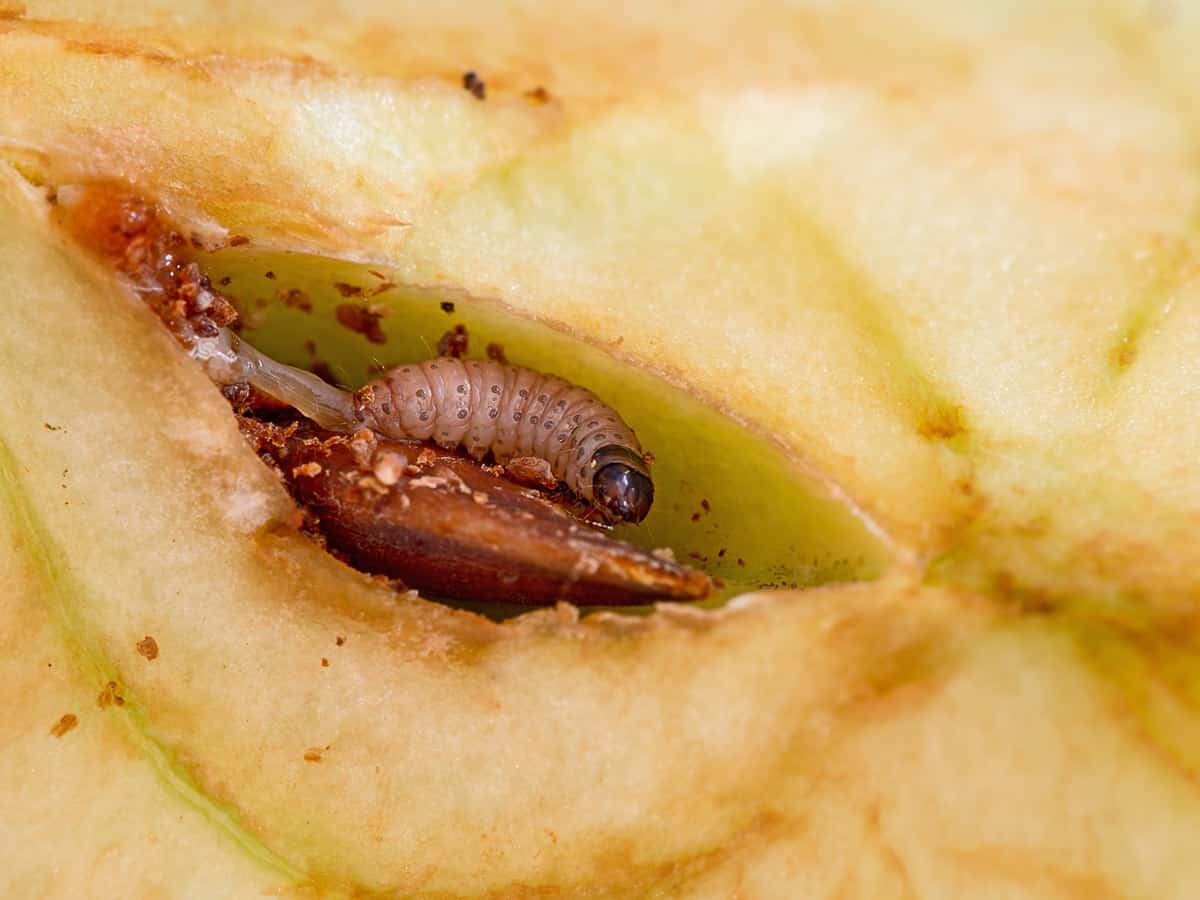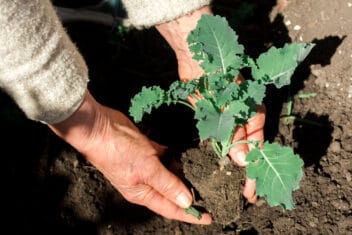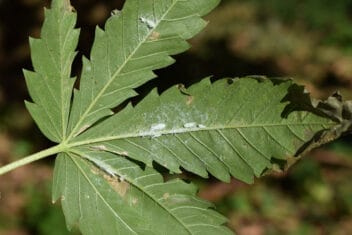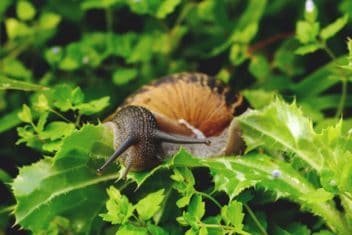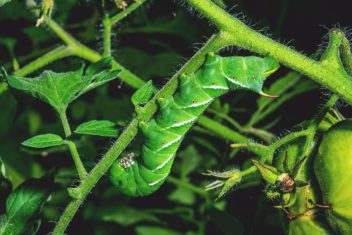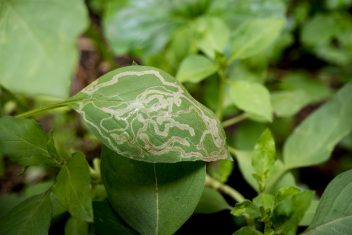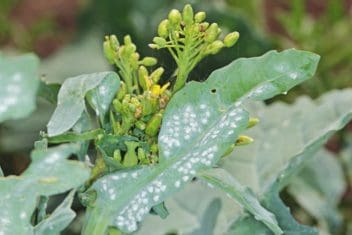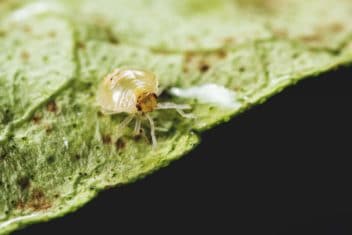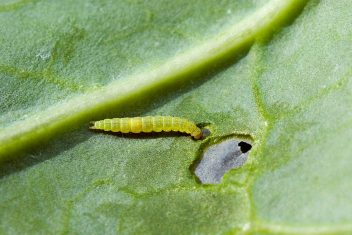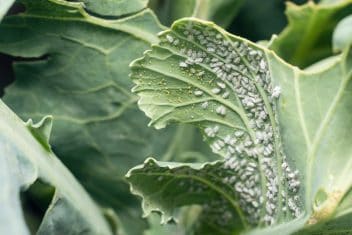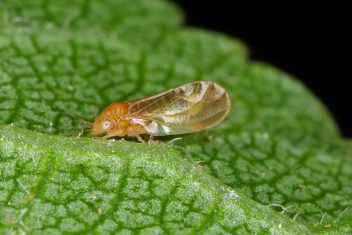If you grow apple, pear, or walnut trees, you need to know about codling moths, one of the most destructive fruit pests. The larvae burrow holes through fruits, destroying your harvest.
If you grow apples, pears, or walnuts, you have to learn what to watch for and how to take quick action.
With the right preventative measures and control methods, you can battle these pests back to manageable levels and keep them away.
What Are Codling Moths?
Codling moths, Cydia pomonella, are a serious pest that infects apple, pear, and English walnut trees. They were introduced to North America by the colonists several hundred years ago, and now, they’re one of the top pests in home orchards.
Codling moths measure 1/2 to 3/4 inch long with mottled grey wings that they hold like a tent over their bodies. Their mottled coloring makes it quite easy for these pests to blend in with the dark on your fruit trees, which is why it’s often hard to identify and find them.
Codling moth larvae are white to light pink, small worm-like insects with dark brown heads. If you find a caterpillar inside an apple or a pear fruit, it’s likely a codling moth larva.
Their damage is a serious problem, especially for commercial fruit orchards. They lead to a lower market value of fruits, and in some cases, an infestation destroys nearly an entire harvest.
The Lifecycle of Codling Moths
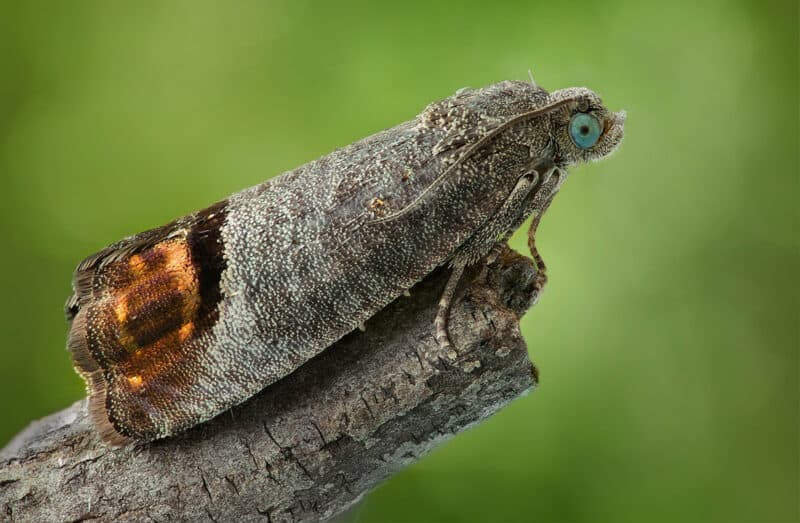
Gardeners need to understand the lifecycle of the codling moth to prevent and treat this pest.
Codling moths overwinter as full-grown larvae inside a thick, silken cocoon underneath the tree’s bark. They also hide in the soil and debris at the base of the fruit trees.
When spring arrives, the larvae pupate inside the cocoon, emerging from mid-March to mid-April as adult moths. Most people rarely see the adult codling moth because they’re only active in the early hours before and right after sunset.
Codling moth females lay 30 to 70 tiny eggs on the fruit, leaves, and spurs of the trees they infest. These eggs hatch into larvae that chew into the fruits or nuts before eventually dropping into the soil, staying there until pupating and coming out again as an adult moth.
Damage Caused by Codling Moths
Since you can’t always spot these pests, you have to know what the damage caused by codling moths looks like.
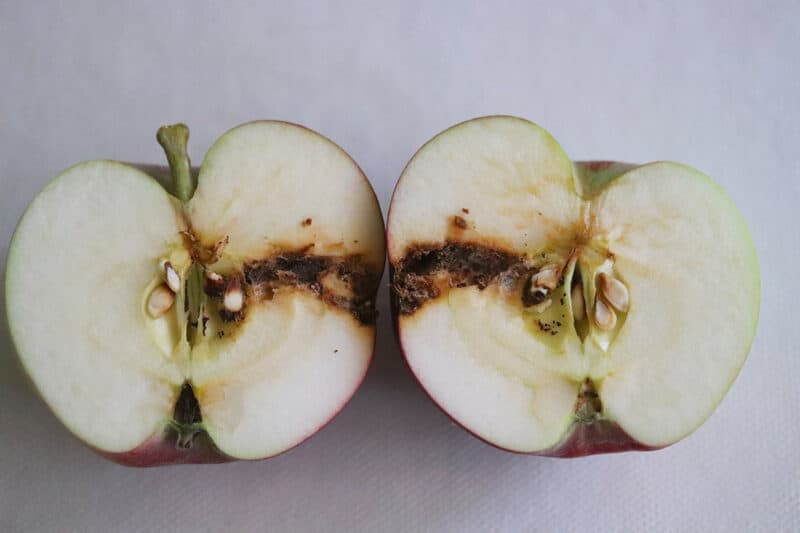
The larvae dig into the fruits, tunneling to the core as they eat their way through. As they go, they fill the holes with a reddish-brown, crumbly material called frass (the fecal waste they leave behind). No one wants to eat fruit filled with moth poop! The tunnels tend to rot and turn soft, rendering the fruit inedible.
In some situations, these pests can infect up to 90% of the fruits.
If codling moths infect walnut trees, the larvae feed on the kernels, resulting in smaller than normal nuts that drop off the trees much earlier than average. The damage caused to walnut trees is much less than the damage caused to fruit trees, however.
How to Get Rid of Codling Moths
Sadly, managing these pests is rather tricky, especially if the population starts to build up over several growing seasons. If you identify and start treatment early, it tends to be much more successful. The goal is to keep the population under a certain number.
1. Horticultural Oil
In the early spring, scrape loose some of the bark on your fruit tree and remove overwinter cocoons before they have the chance to pupate into adult moths. Then, use a horticultural oil spray to kill off the eggs and early instar stages.
2. Beneficial Nematodes
Another way to get rid of codling moths is to use beneficial nematodes to your advantage. These are different than root-knot nematodes, which are most definitely not your friend.
Beneficial nematodes are microscopic, worm-like parasites that hunt and destroy immature codling moths. All you have to do is spray them on the trunks and main branches of your fruit tree, along with the soil, out to the drip line.
Doing this leads to a 60-90% mortality rate for the pre-pupae stages. That’s not a bad way to get rid of these pests!
3. Hang Traps
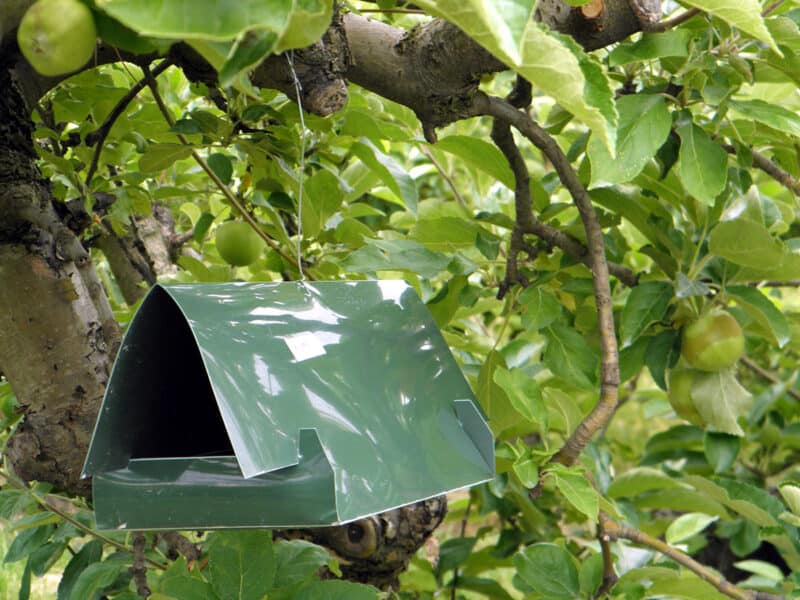
Another trick to getting rid of codling moths is to hang traps in the fruit or nut trees you want to protect. This doesn’t eliminate all of them, but it helps keep the population lower than it would be otherwise.
You can’t just use any trap. The best traps to use are codling moth pheromone traps. You can find these at most garden centers or on Amazon, and they are baited to attract adult moths.
4. Trunk Banding
Trunk banding is a traditional, non-chemical way to control and get rid of codling moths. The goal is to trap the mature larvae in cardboard bands as they climb up the tree trunks, seeking a place to pupate.
Banding works best on smooth-barked varieties because they don’t naturally have other pupation areas. If you use this trick on trees with a lot of crevices, the larvae will find someplace to pupate before reaching the traps.
5. Insecticides
If you have a huge population of codling, you often need to resort to using insecticides to bring the numbers down. You need to time the use of the insecticide well, and in most cases, multiple applications are needed to get rid of codling moths.
Look for insecticides that contain carbaryl or spinosad. These are most effective.
How to Prevent Codling Moths in Your Garden
Preventing codling moths is the preferred course of action; it’s much easier to prevent than get rid of this pest in the garden. Here are some suggestions for preventative measures.
1. Pick Less-Susceptible Varieties
Early maturing apples and pears tend to be less susceptible to codling moths than other varieties. If you’re worried about your walnut trees, late-leafing walnuts are less vulnerable to these pests.
If you aren’t sure which selection would be best, ask your local garden nursery for a suggestion.
2. Improve the Sanitation Around Your Fruit Trees
Sanitation is a big part of growing fruit trees and gardening. It’s a vital step to preventing and getting rid of codling moths, especially if you prefer to avoid chemical measures.
Removing debris around the bottom of your trees is a regular task. Rake away any leaves that drop to the ground and keep the area clear of weeds.
Check your tree for infested fruit and remove them. Doing this helps to stop the larvae from getting old enough to crawl out and pupate, growing the population. Plus, thinning out the bad fruits helps your tree put more energy into the healthy fruits, leading to bigger apples and pears.
Always clean up dropped fruit whenever they fall to the ground. They might have larvae inside them, but they also invite other pests, diseases, and critters to your fruit trees.
3. Don’t Forget to Prune
Pruning and thinning out your fruit trees is a must-do task if you want to prevent codling moths from finding your fruit trees.
One of the best tips is to prune your fruit trees to a manageable height that allows you to reach the canopy easily. This helps you manage the pest population better. If they can escape you, then you’ll never get rid of them all.
4. Bag The Fruits

One of the best control methods for codling moths is bagging the fruits on the tree to protect them from the codling moths, but this is also one of the most time-consuming ways to get rid of these pests. However, bagging is so effective that you often don’t need chemicals.
It’s best to bag all of the fruits on the tree, even if you think you don’t need that many. Any unbagged fruits serve as hosts for the codling moths.
You should place the bags over the fruits four to six weeks after bloom when the fruits are 1/2-1 inch in diameter. This involves thinning the fruits to one per cluster and placing paper bags around the fruits.
Even though you’re covering the fruits, it doesn’t affect the quality of maturity of the fruit. However, it does prevent the full-color development of the red varieties.
You can purchase bags made specifically for this purpose.
